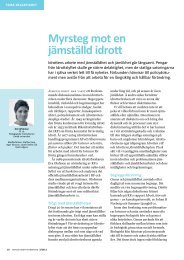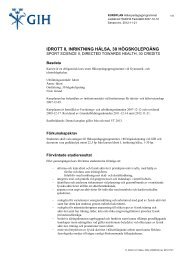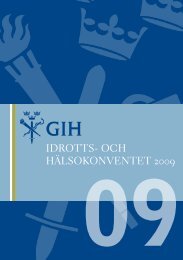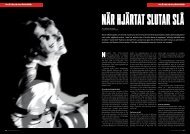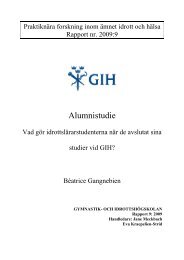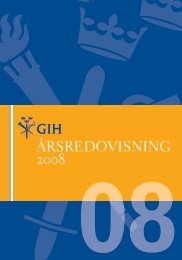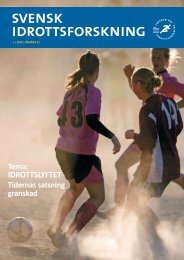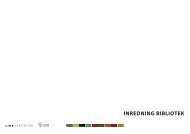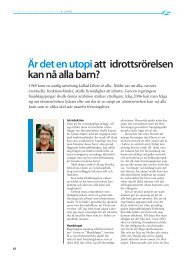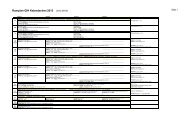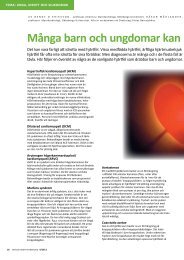Programme and abstracts - GIH
Programme and abstracts - GIH
Programme and abstracts - GIH
You also want an ePaper? Increase the reach of your titles
YUMPU automatically turns print PDFs into web optimized ePapers that Google loves.
Title:Outdoor education in tourist area on Slovenian seasideAuthor/s:Neva Rusjan <strong>and</strong> Rado Gregoric, CSOD, Slovenia.Abstract:Centre for School <strong>and</strong> Outdoor Education – CŠOD was established in 1992 by Ministry ofEducation. Facilities of CŠOD are used by pre-primary, primary <strong>and</strong> secondary schools.CŠODcurrently comprises 23 residential centres <strong>and</strong> 18 day centres that are scattered throughoutSlovenia. About 40.000 pupils per year (60% of pupils that attend out-of-school classes) dotheir obligatory week of out–of-school activities in CŠOD.Ministry provides part of the funding for CŠOD functioning (salaries, equipment, maintenance,<strong>and</strong> part of reconstructions). Only expenses for accommodation are covered by parents. Outof-schoolclasses last from Monday until Friday during the school terms – from September 1until June 25.Schools can choose from different interdisciplinary programs: Out-of-schoolclasses with emphasis on nature science, with emphasis on social science or with emphasison sport. The main purpose of the CŠOD is to educate in outdoors using specific methods, bywhich objectives stated in school curricula can be met. There are two CŠOD centres nearSlovenian sea coast. Both are very close to the sea, close to nature reserves <strong>and</strong> l<strong>and</strong>scapeparks. At the same time they are very close to the most developed tourist coastal towns inSlovenia - Portoroz <strong>and</strong> Piran.This geographical situation is successfully used when workingwith students. Urban environment is somehow unusual place for outdoor education, but stilloffers new <strong>and</strong> different opportunities to learn about the environment.We teach students howto use basic orientation: sides of the sky, reading a map, to calculate distances in nature, theuse of modern GPS systems, pedometer <strong>and</strong> the use of various applications on mobilephones. They use <strong>and</strong> test acquired knowledge in an urban environment - in the city, theurban sites, churches, markets. In this way they learn about the city <strong>and</strong> put their knowledgeinto practice. Similar activities are also taking place with bikes <strong>and</strong> canoes. We combinesports content with science <strong>and</strong> geographic context <strong>and</strong> take the advantage of versatile urbanenvironment. In its work, students are reminded to be environmentally conscious. To visitprotected areas along the Slovenian coast we always use bicycles <strong>and</strong> canoes. It is alsoimportant to compare the urban environment with natural <strong>and</strong> protected environment.Students can critically assess the importance of nature conservation for sustainabledevelopment in this way. In modern times there must be sustainable coexistence of the urban<strong>and</strong> natural environment. That is the main objective of our activities. In addition students learnalso about: marine biology, geological structure of the soil, coastal vegetation, the region'seconomy, <strong>and</strong> camping <strong>and</strong> survival skills in the wild. During their stay we put great emphasison socialization <strong>and</strong> mutual acceptance.25




